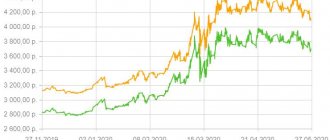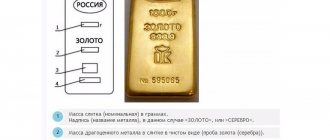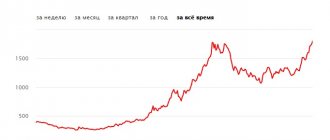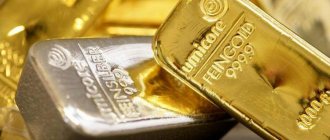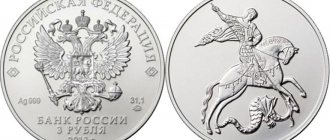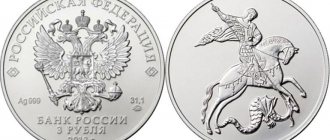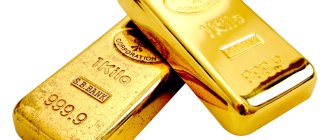The gold market was in a growth trend from August 2021 to August 2020, and increased from the level of $1,160 (low of August 2018) to the level of $2,070 (high of August 2020) dollars per troy ounce - a total of $900 dollars, or almost 80%, for the past 2 years. After this, the market entered a consolidation phase that lasted 15 months and ended in November 2021.
We expect that the growth phase that has begun will be even more powerful than the previous one, and will also last for more than one month, and most likely for more than one year.
The immediate reason for the emerging gold TREND is stagflation: a situation in which the rate of inflation significantly exceeds the rate of economic growth, and at the same time this growth itself is due mainly to monetary / credit “pumping” in ever increasing volumes - without which growth can very quickly give way to recession and even depression. Approximately how a drug addict without another “dose” goes into “withdrawal.”
Moreover, if the ever-increasing “monetary stimulus” from the leading central banks is removed, cash gaps will begin in the System, which could cause a chain reaction of defaults and paralysis of the financial and banking system.
Debt securities will sharply fall in price, margin calls will begin on pledged securities, etc. according to a scenario that is the nightmare of the monetary authorities. The conclusion is very simple: monetary stimulus will be reduced only symbolically (ostensibly for the sake of fighting inflation - which does NOT have monetary reasons), in order to then increase dramatically again.
Inflation growth will continue its upward trend, sometimes accelerating, sometimes temporarily slowing down - but invariably devaluing the debts of states and the savings and pensions of citizens.
The fundamental reason for the rise in the price of gold is the approaching default of the financial system (and primarily the leading states), in which debts have been accumulating for decades without any intention of ever repaying them. These debts will inevitably be written off/“zeroed out” sooner or later, through monetary reform.
All states sooner or later default on their obligations - this rule has NO exceptions.
The only difference is in frequency: states on the “periphery” of the financial system do this once every 1-2 decades, while states in which the “metropolis” of the System is located default once every century.
The last time this happened was in the 1930s, when a huge number of European countries defaulted, including the British Empire, which untied the pound from gold backing. And also including the United States, which devalued the dollar against gold and devalued its government obligations.
And in order to avoid social unrest due to the confiscation of savings and pensions and a sharp drop in living standards in the event of a system default, under various pretexts (in particular, “fighting the pandemic”), preventive measures can be taken to limit the mobility of citizens and strengthen control over the population - through the mechanism of electronic passports / QR codes.
These measures have already been introduced in many European countries, where the debt problem is most serious, and states burdened with high social payments (with an economy that is not growing due to the extremely high tax and regulatory burden) have come closest to actual bankruptcy and are at constant “monetary support” from the ECB (European Central Bank), like a patient on a drip (or a drug addict on a “dose”).
Dynamics of gold prices over the past 5 years in Russia in rubles
Over five years (2014-2019), compared to the previous similar period, the situation has stabilized somewhat. Against the background of falling quotations in dollars, the price in rubles, on the contrary, increased. The minimum cost was recorded in June 2014, falling below 1,400 rubles/year. The average price over 5 years was about 2250 rubles/g. (approximately 70 thousand per troy ounce). You can clearly see this by looking at the graph.
Gold, Silver and Platinum Quotes from TradingView
Over the past 5 years, the price of gold in rubles has increased by more than 90%. The chart above shows consolidated data on changes in precious metal quotes on world trading floors in USD.
Market of physical gold coins in Russia
The synchronized increase in the price of gold in dollars and the dollar-ruble exchange rate led to a jump in the price of gold coins “St. George the Victorious” with a face value of 50 rubles and weighing 7.78 grams (or 1/4 troy ounce) of gold, by 6-7%: from levels of approximately 35.500-36.500 rubles to levels of approximately 37,500-38,500 - depending on the year of minting and the mint.
The price of gold coins has risen slightly less (premiums to the exchange have fallen) than the price of gold on the exchange - where there has been a jump of almost 10% from minimum levels.
This happened due to the fact that the physical gold market is more inert and there is still a supply of coins purchased at lower price levels on the market. But as soon as these relatively cheap coins are “washed” from the market, the price of physical gold coins will rise along with the exchange quote.
However, in the next 1-2 weeks in the gold market we expect more consolidation and “digestion” of the previous growth
, although the factor of instability (and rising prices for coins) this time may be the ruble, and also the fact that the Central Bank of the Russian Federation will close its “window” for ordering coins from December 1, and premiums will increase again - until the middle / second half of January, when the Central Bank will “open” for orders again. Follow our news and quotes!
Gold Reserve, analytics department, November 17, 2021
Factors that influence price growth or decline
The key factor is always the demand for gold in relation to supply. Statistics show that an increase in quotations of precious metals is observed when exchange rates of reserve currencies fluctuate.
Expert opinion
Lyudmila Pestereva
Our most experienced gold investor
Ask a Question
Investors try to protect their money by investing in gold. It provides maximum stability, because it is not only a currency, but also a commodity.
Thus, changes in accounting policies in the United States contributed to an increase in demand and value of the asset and led to changes in quotations.
The latest crisis has forced entire countries to reconsider the composition of their foreign exchange reserves, increasing the share of physical gold in them. This increase in demand for this type of investment, apparently, provoked a sharp jump in prices for precious metals in 2011-2012. Subsequently, demand decreased somewhat and over the past few years there has been no significant rise or significant decline in prices.
When the situation is stable, noticeable fluctuations in quotes can cause actions by major players. For example, the sale of a significant amount of precious metal is quite capable of influencing a decrease in the price of gold.
The situation will worsen even more when other investors rush to get rid of their depreciating asset. However, this consequence of speculative operations is quickly corrected in accordance with the laws of the market.
Depletion, or, on the contrary, the launch of new large mines, the emergence of a cost-effective method of extracting precious metals from alternative sources can also cause fluctuations in stock prices.
How much could you earn in a year, 2, 5 and 10 years?
Owning a ton of gold in itself, in addition to satisfying one’s pride, also brings real profit. Gold is a currency. Its simple storage as a reserve “for a rainy day” is used as a safe haven asset, because the metal is liquid in any situation (war, change of political system, economic crisis).
With a starting price at the time of writing of 1 troy ounce of $1,227.10 USD (and one troy ounce contains 31.1035 grams), a ton is estimated at 39,452,151 in US dollars, or 2,641,321,555 in rubles (slightly more than 2.5 billion).
Price dynamics charts show that:
- Over the year (2017-2018), the price of a troy ton decreased from $40,992,171 to $39,448,936 (-$1,543,234).
- Over the course of 2 years, it increased from 36,233,864 to 39,448,936, that is, by $3,215,072.
- In 5 years it has remained virtually unchanged.
- The lucky owners of a ton, who owned it 10 years ago (in December 2008), today, having sold all the available metal, would become 1.4 times richer. That is, their passive income would be $15,779,574.
How can you invest in gold
In an unstable economic situation, market participants often adjust their portfolios towards defensive asset classes. Reckless actions reduce potential returns, so you must first examine the factors that affect the returns and costs of such investments. In this material we will look at investing in gold.
Let us highlight two approaches when investing in precious metals:
Old School • Gold bars • Gold coins • Unallocated metal accounts (UMA)
Modern • Gold futures • Funds (ETF, mutual fund, BPIF) • Shares of gold miners in the Russian Federation and the USA
Old School
Gold bars
In the society of the 20th century and earlier history, the presence of physical gold in a person was considered a sign of success and wealth: it was always valuable and accepted for payment in any part of the world. Those who do not trust technologies for managing virtual assets and are accustomed to keeping their capital at hand invest in gold bars.
pros
• A real physical asset that can be stored in any safe place. This option is suitable for ultra-conservative investors who do not trust the banking system and third-party storage facilities.
Minuses
• Payment of VAT in the amount of 20% of the cost of the purchased volume of gold. In the future, this tax may be abolished, but there is no exact information yet. According to Vedomosti, the Ministry of Finance plans to abolish it at the beginning of 2022. • Large spread (the difference between the purchase and sale prices). In banks, yellow metal is sold at 5–10% more expensive than purchased. • Wear. If damage, scratches, or dents are found on the ingot, its value will decrease by 10–20%. • When selling, you must pay 13% personal income tax. If you have stored gold for more than three years and have documents confirming the date and cost of acquisition, then you do not need to pay personal income tax - clause 17.1 of Art. 217 Tax Code of the Russian Federation.
Example. In November 2021, 1 gram of gold in one of the largest banks costs 4,601 rubles, and is sold at 4,215 rubles. On the spread, 8.4% of the amount will be lost and 13% due to personal income tax if the sale occurs before three years.
Category: questions and answers
Where are the searches for gold concentrate carried out?
Expert opinion
Shabanov Andrey
Amateur prospector, has been searching for gold for over 14 years
The main gold-bearing areas of Russia are located in the northern and northeastern regions: Magadan, Amur, Irkutsk regions, Khabarovsk, Primorsky, Transbaikal Territories. But small areas rich in precious metal are found everywhere. Gold concentrate is sought among rocks, soil and clay taken from the banks of rivers and streams. The precious metal ends up in the river itself after landslides or under the pressure of its own weight. When it is found in a river, gold miners go upstream, taking samples.
Is it possible to wash a nugget in schlich sand?
Expert opinion
Shabanov Andrey
Amateur prospector, has been searching for gold for over 14 years
Small nuggets can be washed in clay sand. The lower limit for a nugget is 0.3 grams of weight. Smaller precious metals are usually called gold flakes or particles.
Gold without impurities
Why is spot gold cheap?
Expert opinion
Pribrezhny Gennady Valentinovich
Jeweler 6th category
Indeed, schlich precious metal is one of the cheapest. It has not yet been purified and includes a considerable amount of impurities such as copper, silver, and iron. Therefore, it is of no value either to the jewelry industry or to industry. After undergoing refining procedures, the cost of pure gold will increase significantly and will correspond to the price of the highest standard at the rate of the Central Bank of the Russian Federation.
What is called schlich gold?
The word "schlich" comes from the German language and is translated as "sediment, precipitation, passage." Accordingly, if we are talking about any metal, then this term refers to a rock or soil conglomerate with various minerals. However, calling silver or iron, for example, schlich will not work, since only gold exists in this form, and the term itself was applied by the Germans specifically to the “yellow miracle.”
To put it simply, gold-bearing raw materials are concentrate. His list includes ore, black fine material, rock, stones, dust, mined sediment from rivers - in general, anything that can be used to make gold. Small nuggets that have not undergone refining treatment can also be called spot nuggets.
Gold production and consumption
Gold production grew over the centuries along with the need for money, but even after the abolition of its circulation in the world, the attitude towards this product as a means of saving remained (the logic of Gresham’s law is clearly visible here), so gold production continued to grow and is at a record level according to the results of 2019.
Gold production, as will be shown below, completely covers the needs of industry. The second constant source of gold is scrap. Mining volumes are also increasing, rising from 20 million ounces in the early 1990s to 40 million ounces in recent years. In 2019, the supply of gold from permanent sources (mining and scrap) amounted to 150 million ounces per year.
If prices remain at $1,000–2,000, production volumes will remain at the current level or even increase, since the average production cost is much lower. The cost of gold production has risen substantially in line with the price over the past 20 years. At the same time, at the end of the 1990s it is clear that when the price of gold falls, the cost of production also falls due to the cessation of production at costly deposits.
Costs of $700 in recent years clearly indicate a large margin for a decline in the price of gold. The offer will remain high even at $700.
The constant demand for gold consists of its industrial consumption: mainly jewelry production, also the electronics industry, coin production. Industrial consumption of gold grew until the late 1990s amid a decline in its real price. Maximum demand was 120 million ounces per year. Further, consumption decreased due to rising prices. A decline was also observed in the late 1970s with surges in gold prices. It is obvious that gold prices can only receive support from industry at values of $400–1,000.
The market balance consists of the constant supply of gold minus its industrial consumption. Investment demand and demand from central banks can have either a negative or a positive balance and are therefore ignored in Chart 7.
The balance sheet shows that low gold prices in the late 1990s were accompanied by a lack of production, and since 2006 there has been a constant surplus of gold on the market amid high prices. Investment demand and demand from central banks was negative in the 1990s, and in the last 10 years it has been absorbing 40-60 million ounces per year. When investor interest shifts to other investments, the price of gold could fall quite sharply in the direction of $500-800 per ounce, where supply will decrease and demand will increase.
What is the schlich search method?
The dredge method of gold mining is the most famous and widely used, but there is also a schlich method. This ancient method is based on a gradual and thorough study of the deposit, and, as a rule, requires large labor resources. It consists of several stages.
- Taking a sample from the deposit. Once geologists have discovered gold ore deposits, they study the area in detail and take a soil sample to study its composition.
- Clearing. The mines are put in order with the help of machinery, removing excess soil, sand and unnecessary debris.
- Scale assessment. Now the work again falls on the shoulders of geologists, who will determine the scale of the placers and estimate the amount of gold located nearby.
- Summing up. Prospectors agree on which layers and at what depth the bulk of the deposits are located, and draw up a development plan.
- Preparation of documents. A mandatory step is to complete the paperwork in order to legally begin excavations.
Equipment is brought to the future quarry, the necessary washing equipment is installed (including dredging equipment), and concentrate mining begins. In the video below you can see what the process is all about.
Metal sample after cleaning and its value on the stock market
After cleaning, the precious metal will correspond to the highest standard. Such a sample is designated by the number 999 in the metric system or by the sign “24K” in the karat system. According to the standard established by GOST, it contains 99.9% pure gold per gram of total mass.
The price for such metal is set by the Central Bank of the Russian Federation based on quotes from the London Stock Exchange.
Today, the current cost of the highest standard of gold varies on the stock market around 3800-4000 rubles per gram.
Stages of the schlich method of gold mining
The spot method is rightfully considered the oldest method of searching for precious metals. In terms of popularity, it is not inferior to the dredge method. During the time when the gold rush was on the minds of people, the largest deposits of placer gold were discovered by washing concentrates of various rocks using ordinary washing pans, shovels, perseverance and, of course, luck.
The loose rock is processed either to a gray concentrate containing relatively light minerals, or to black, which is considered the final stage of washing. The final finishing of the material takes place in special trays.
There are several different versions of such trays - Korean, Siberian, Kharitonov and others. Most often, plastic and Korean trays are used for work. The raw material from which it is made affects the level of washing and extraction of concentrate. Geologists take this factor into account when analyzing the results of concentrate searches.

